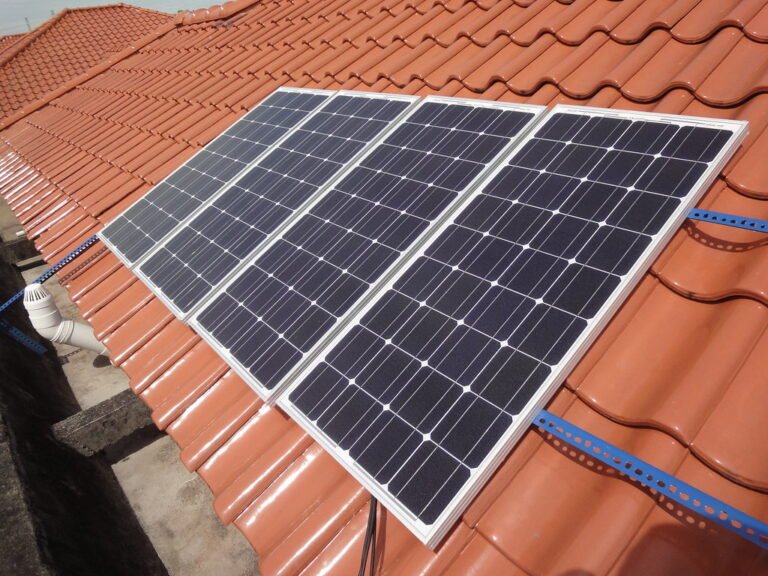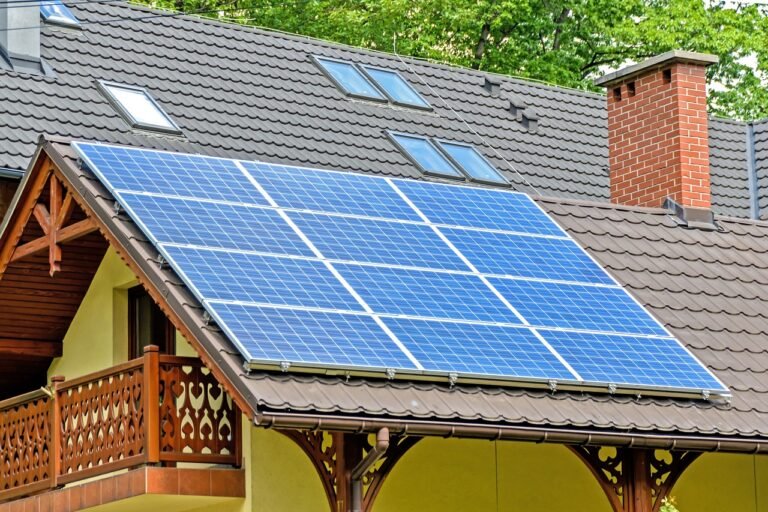Introduction to Solar Energy and Electric Bills
Solar energy is increasingly recognized as a sustainable and environmentally friendly alternative to traditional energy sources. With the rising concerns about climate change and the finite nature of fossil fuels, homeowners and businesses alike are turning to solar power to meet their energy needs. This shift toward solar power not only allows for lower carbon emissions but also offers various solar power benefits, such as reduced electricity bills and long-term savings.
At its core, solar energy harnesses sunlight and converts it into electricity through photovoltaic (PV) cells found in solar panels. By investing in solar panels, consumers can significantly decrease their reliance on grid electricity. This transition can lead to profound changes in monthly electric bills. The cost of conventional electricity is often influenced by several factors, including market fluctuations, infrastructure maintenance, and regional demand. As such, these costs can vary, making budgeting for energy expenses somewhat unpredictable.
When homeowners install solar panels, they start generating their own electricity. This generation allows them to draw less from the grid, directly impacting their monthly utility bills. Furthermore, some residential solar systems can produce surplus energy, which can then be sold back to the grid, potentially offering additional financial benefits. The consideration of solar panel costs and the available incentives often leads many to conclude that the initial investment can pay off in a relatively short period, given the ongoing savings on their electric bills.
-Explore Solar Energy Companies Near You in Australia-
As more individuals and organizations recognize the solar panel benefits, such as financial savings and environmental impact, the popularity of this renewable energy source continues to grow. This trend exemplifies a broader movement toward sustainable living, providing individuals with a pathway to lower energy costs while contributing to a healthier planet.
How Solar Panels Generate Electricity
Solar panels are sophisticated devices that convert sunlight into electricity, utilizing the principles of photovoltaic technology. At the heart of this technology are photovoltaic (PV) cells, which are typically made of semiconductor materials such as silicon. These cells are responsible for absorbing sunlight and initiating the electricity generation process. When sunlight or photons strikes the PV cell, it transfers energy to electrons within the semiconductor material, prompting them to break free and move freely. This movement of electrons is the foundation of electric current generation.
Once the electrons are mobilized, they flow through the cell, creating direct current (DC) electricity. However, most household appliances operate on alternating current (AC) electricity. To facilitate this conversion, an inverter is employed. This device converts the DC electricity generated by the solar panels into AC electricity, making it usable for powering home appliances. The efficiency of the inverter is crucial, as a high-quality inverter will minimize power loss during this conversion, thereby maximizing the overall energy output from the solar panel system.
In addition to inverters, many solar energy systems incorporate batteries. While not all solar power systems include battery storage, integrating batteries allows homeowners to store excess energy generated during peak sunlight hours for use during times when the sun is not shining, such as at night or on cloudy days. This feature is especially beneficial for enhancing the solar power benefits in terms of reducing the solar power bill. Through effective energy management and storage, solar panels can significantly lower electricity costs by maximizing the use of self-generated power, ultimately leading to substantial savings in the long term.
Impact of Solar Panels on Your Electric Bill
The implementation of solar panels in residential or commercial settings has gained significant attention due to their potential to drastically alter electric bills. One primary advantage of solar power is its ability to reduce reliance on the grid, resulting in notable cost savings over time. When homeowners install solar panels, they harness energy from the sun, converting it into electricity to power their homes. This shift not only reduces the amount of electricity drawn from the utility provider but can also significantly lower overall solar power costs.
-Explore Solar Energy Companies Near You in Australia-
A financial mechanism called net metering plays a crucial role in this benefit. Net metering allows for the excess energy produced by solar panels to be fed back into the grid. In return, homeowners receive credits that can offset future solar power bills. This means that on sunny days, when solar panels generate surplus electricity, homeowners can essentially sell back their excess energy and earn credits that contribute to lowering their electric bills during less sunny periods.
Statistical data supports the efficacy of solar panel installations in reducing utility costs. According to the Solar Energy Industries Association, specific regions have reported savings of up to 70% on their electric bills. For instance, in states with higher sunlight exposure, households can experience quicker return on investment (ROI) periods for their solar panel costs, averaging about 5 to 7 years. Thus, the installation of solar panels definitely empowers homeowners to take control of their monthly expenses.
Furthermore, it is important to consider the long-term implications. Over a span of 20-25 years, homeowners can save tens of thousands of dollars on electricity bills, especially when factoring in the declining costs of solar panel installation combined with incentives and tax rebates. In conclusion, the financial implications of solar panels on electric bills are profound, providing reliable savings to conscious consumers willing to invest in sustainable energy solutions.
Factors to Consider Before Going Solar
When contemplating the adoption of solar energy, it is vital to evaluate several factors that can significantly influence the effectiveness and cost-efficiency of solar panels in reducing your electricity bill. One of the most critical considerations is your location. Solar power benefits can vary greatly depending on the amount of sunlight your area receives throughout the year. Regions with consistent, strong sunlight will typically see more significant savings on their electricity bill than those with frequent cloud cover or inclement weather. It is advisable to research the solar irradiation data for your specific location.
Another important aspect is the orientation and condition of your roof. Solar panels work best when installed on a south-facing roof that has minimal shading from trees or nearby buildings. The angles and pitch of the roof can also affect the efficiency of solar energy production. Therefore, before making a decision, it is wise to have a professional assessment done to ensure that your roof is suitable for solar panel installation.
The initial investment costs associated with solar panels can also be a deciding factor. While the long-term savings on your solar power bill can be substantial, homeowners need to consider the upfront costs, which may include purchasing the panels, installation, and potential maintenance. Exploring available financing options, such as loans, leases, or power purchase agreements (PPAs), can offer flexibility and make solar energy more accessible.
-Explore Solar Energy Companies Near You in Australia-
Lastly, local policies and incentives can influence the decision to install solar panels. Many states offer tax credits, rebates, or grants, significantly reducing the overall solar panel costs. It is essential to stay informed about any programs or policy changes in your area that could affect your investment. Evaluating these factors holistically can empower you to make an informed decision about transitioning to solar energy and its subsequent effects on your electricity expenses.



